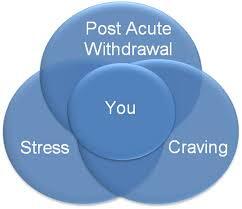
Post-Acute Withdrawal
What is Post-Acute Withdrawal? Post-acute withdrawal is also known as PAW. PAW describes a set of persistent impairments that occur after withdrawal from alcohol, opiates, benzodiazepines, antidepressants and other substances. Post acute withdrawal syndrome affects many aspects of recovery and everyday life, including the ability to keep a job and interact with family and friends. Symptoms occur in over 90% of people withdrawing from a long-term opioid for example heroin. Symptoms occur in 75% of persons recovering from long-term use of alcohol, methamphetamine, or benzodiazepines. Then symptoms occur to a lesser degree with other psychotropic drugs. Post-acute withdrawal syndrome as a result of GABA-agonist (benzodiazepine, barbiturate, ethanol) dependence. Opioid dependence can last from a year to several decades, or indefinitely. Sometimes symptoms enter into periods of relative remission. Then there are periods of instability. Symptoms include mood swings resembling an affective disorder, insomnia, extreme drug craving and obsession, anxiety and panic attacks, depression, suicidal ideation and suicide and general cognitive impairment. Most importantly anhedonia (the inability to feel pleasure from anything beyond use of the drug).
These symptoms are caused by a depletion of amino acids and neurotransmitters in the brain. In order to avoid post-acute withdrawal, an addict needs to be evaluated. Once the deficiencies are identified, the road to recovery will begin. Effective benzodiazepine addiction treatment is crucial during this phase to address these imbalances and support long-term recovery.
Related Articles
What it’s Like to Go Through Detox and Withdrawal
How Long Should Addiction Treatment Last?
COVID-19 and Addiction: Getting Back on Track after the Pandemic
